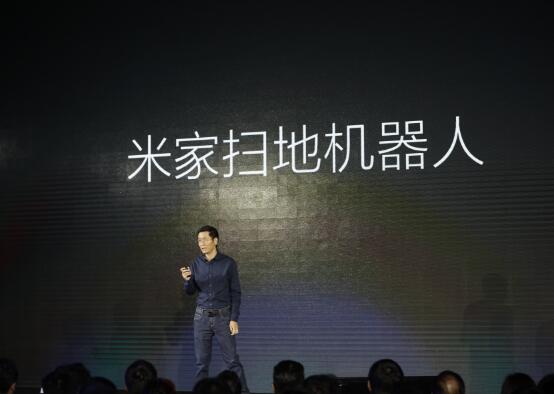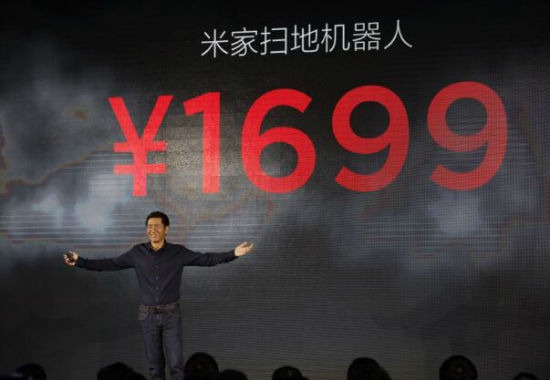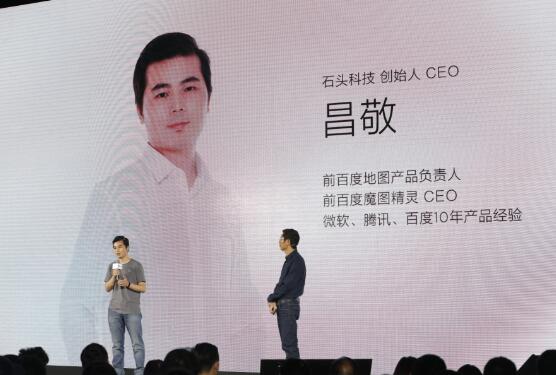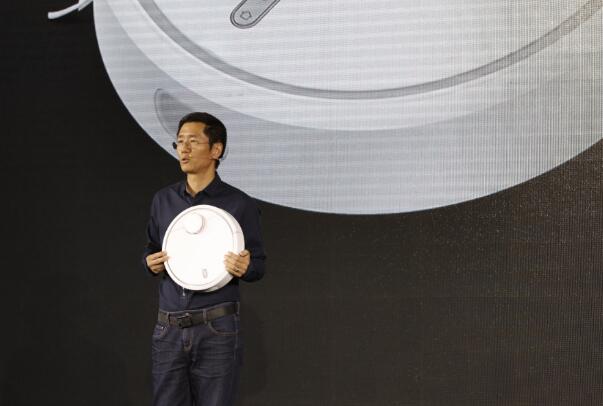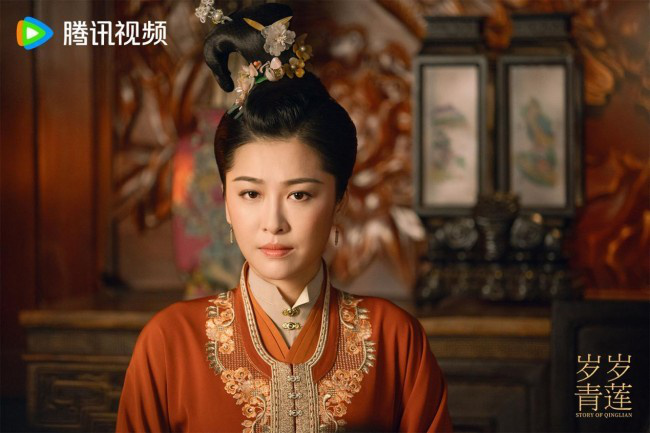Cctv newsAccording to the news of the State Administration of Market Supervision, according to the work arrangement of the special action of tea over-packaging, in order to further play the warning and education role of typical cases and strengthen the concept of green and simple management and consumption, the second batch of 20 typical cases are now announced as follows:
1. Tongxiang City Market Supervision Bureau of Zhejiang Province investigated and dealt with the case of Wutong Mingrui visiting a tea shop in Tongxiang City to sell tea with excessive packaging void ratio.
On November 16th, 2023, the Market Supervision Bureau of Tongxiang City, Zhejiang Province imposed an administrative penalty of 3,000 yuan on Tongxiang Wutong Mingrui’s visit to a tea shop (hereinafter referred to as the party concerned) for failing to comply with the mandatory standards for restricting over-packaging of commodities and refusing to correct it.
On April 13th, 2023, Tongxiang Municipal Market Supervision Bureau carried out a special inspection on the over-packaging of tea, and manually measured a boxed Chenpi tea with a net content of 125g and two layers of packaging. It was found that the initial packaging length, width and height of the circumscribed cuboid were 280mm, 160mm and 210mm respectively, and the packaging void ratio was 54%, which did not meet GB 23350-. 45% ",the notice of ordering correction was issued on the spot, requiring the parties to correct the above illegal acts and remove the over-packaged tea products before April 20, 2023. On September 1, 2023, when law enforcement officers carried out a "look back" on the over-packaging of tea, they found two boxed Jinjunmei teas sold by the parties: specification 1, 12 small iron boxes with a maximum net content of 200 grams, cuboid packaging, 2 layers of packaging, length, width and height of 333mm, 265mm and 87mm respectively, a total of 4 boxes; Specification 2: There are 2 small ceramic cans with a maximum net content of 250g, and they are packed in a cuboid with 2 layers, the length, width and height are 332mm, 223mm and 133mm respectively, making a total of 7 boxes. Entrusted by Jiaxing Fiona Fang Testing Technology Co., Ltd., the above two tea gift boxes were tested, and the packaging void ratio was 65% and 67% respectively.None of them meet the requirements of GB 23350-2021 "Food and Cosmetics for Restricting Over-packaging of Commodities" about "The net content of a single piece is Q > 50g, and the void ratio is ≤ 30% "requirements.
The behavior of the parties concerned violates the provisions of the second paragraph of Article 68 of the Law on the Prevention and Control of Environmental Pollution by Solid Waste in People’s Republic of China (PRC), and belongs to the behavior that the producers and operators stipulated in Article 105 of the Law on the Prevention and Control of Environmental Pollution by Solid Waste in People’s Republic of China (PRC) failed to comply with the mandatory standards for restricting the over-packaging of commodities and refused to correct it. Tongxiang Municipal Market Supervision Bureau made an administrative penalty according to the provisions of Article 105 of the Law on the Prevention and Control of Environmental Pollution by Solid Waste in People’s Republic of China (PRC).
2. Xinye County Market Supervision Bureau of Henan Province investigated and dealt with the case that Laoyan Tea Shop in Xinye County operated tea with excessive packaging cost.
On October 27th, 2023, Xinye County Market Supervision Bureau of Henan Province imposed an administrative penalty on Laoyan Tea Shop in Xinye County (hereinafter referred to as the party concerned) for failing to comply with the mandatory standards for restricting over-packaging of commodities and refusing to make corrections.
On October 8, 2023, Xinye County Market Supervision Bureau carried out a special inspection of tea over-packaging, and found that the selling price of "Chennian Shupu" sold by the parties was 368 yuan/box, and the purchase price of the external packaging gift box purchased by the parties from Fujian Yuyuan Tea Wholesale Market was 88 yuan/box, and the packaging cost accounted for 23.9% of the selling price of tea. Do not meet the requirements of GB 23350-2021 "Food and Cosmetics for Restricting Over-packaging of Commodities" that "the production organization should take measures to control the cost of all packages except those that are in direct contact with the contents not to exceed 20% of the sales price of the products", and issue a Notice of Order to Correct on the spot to the parties concerned, demanding to correct the above-mentioned illegal acts and remove the relevant products. On October 16, 2023, the review found that the parties were still selling the above tea gift boxes.
The behavior of the parties concerned violates the provisions of the second paragraph of Article 68 of the Law on the Prevention and Control of Environmental Pollution by Solid Waste in People’s Republic of China (PRC), and belongs to the behavior that the producers and operators stipulated in Article 105 of the Law on the Prevention and Control of Environmental Pollution by Solid Waste in People’s Republic of China (PRC) fail to comply with the mandatory standards for restricting excessive packaging of commodities and refuse to correct them. The Xinye County Market Supervision Bureau is based on Article 105 of the Law on the Prevention and Control of Environmental Pollution by Solid Waste in People’s Republic of China (PRC) and Item (1) of Article 10 of the General Rules for the Application of Administrative Punishment Discretion in Henan Market Supervision and Management. In view of the fact that the parties actively cooperate with the investigation, truthfully state the illegal facts and provide evidence materials on their own initiative, and the illegal acts are minor and less harmful to society, the punishment shall be mitigated according to law.
3. Sanjiang County Market Supervision Bureau of Guangxi Zhuang Autonomous Region investigated and dealt with the case of Sanjiang Haorunlai Trading Co., Ltd. selling tea with excessive packaging layers.
On September 8, 2023, Sanjiang Market Supervision Bureau of Guangxi Zhuang Autonomous Region imposed an administrative penalty of 2,000 yuan on Sanjiang Haorunlai Trading Co., Ltd. (hereinafter referred to as the party) for failing to comply with the mandatory standards for restricting excessive packaging of commodities and refusing to correct it.
On September 1, 2023, the Sanjiang County Market Supervision Bureau found in the special inspection of over-packaging of commodities that the Tieguanyin tea gift box (production date: January 3, 2022) sold by the parties consisted of five layers of transparent plastic packaging (non-protective film), cardboard foam square carton, iron box, paper sealing layer and tea bag plastic packaging layer. Failing to meet the requirements of GB 23350-2021 "Food and Cosmetics for Restricting Over-packaging of Commodities" that "the grain and its processed products, moon cakes and zongzi should not exceed three floors, and other commodities should not exceed four floors", a Notice of Ordering Correction was issued on the spot, requiring the parties to immediately correct the illegal behavior and stop selling over-packaged products. On September 8, 2023, the review found that the party concerned had not corrected the illegal act, and the tea gift box was still placed on the shelf for sale.
The behavior of the parties concerned violates the provisions of the second paragraph of Article 68 of the Law on the Prevention and Control of Environmental Pollution by Solid Waste in People’s Republic of China (PRC), and belongs to the behavior that the producers and operators stipulated in Article 105 of the Law on the Prevention and Control of Environmental Pollution by Solid Waste in People’s Republic of China (PRC) failed to comply with the mandatory standards for restricting the over-packaging of commodities and refused to correct it. The Sanjiang County Market Supervision Bureau made an administrative penalty according to the provisions of Article 105 of the Law on the Prevention and Control of Environmental Pollution by Solid Waste in People’s Republic of China (PRC).
4. The Market Supervision Bureau of Tianmen City, Hubei Province investigated and dealt with the case of sales of tea with excessive packaging void ratio by the sales department of Rulian Green Tea Industry in Tianmen City.
On November 21, 2023, Tianmen City Market Supervision Bureau of Hubei Province imposed an administrative penalty of 2,000 yuan on the business department of Yinlianqing Tea Industry in Tianmen City (hereinafter referred to as the party concerned) for failing to comply with the mandatory standards for restricting excessive packaging of commodities and refusing to correct it.
On June 21, 2023, Tianmen Municipal Market Supervision Bureau found that the tea gift box of "Shanghe Zhihe Pu ‘er Tea (raw tea)" sold by the parties consisted of three layers: independent paper box, independent iron box and independent wooden box. In addition, it was found that the specification of the tea was 7 g× 6 packs. After on-site measurement by manual method, the length, width and height of the rectangular box were 235mm, 140mm and 85mm, respectively, and the packaging void ratio was 81.1%, which did not meet the requirements of GB 23350-2021 "Food and Cosmetics for Restricting Over-packaging of Commodities". 15g, porosity ≤ 60% "requirements. Tianmen Municipal Market Supervision Bureau issued the Notice of Ordering Correction on the spot, requiring the parties to correct the illegal acts and stop selling. On October 24, 2023, the review found that the above products were still on sale. Entrusted by Chongqing Institute of Metrology and Quality Inspection, the packaging gap was 88.1%, which was judged as not meeting the mandatory standards for restricting excessive packaging of goods.
The behavior of the parties concerned violates the provisions of the second paragraph of Article 68 of the Law on the Prevention and Control of Environmental Pollution by Solid Waste in People’s Republic of China (PRC), and belongs to the behavior that the producers and operators stipulated in Article 105 of the Law on the Prevention and Control of Environmental Pollution by Solid Waste in People’s Republic of China (PRC) failed to comply with the mandatory standards for restricting the over-packaging of commodities and refused to correct it. Tianmen Municipal Market Supervision Bureau made an administrative penalty according to the provisions of Article 105 of the Law on the Prevention and Control of Environmental Pollution by Solid Waste in People’s Republic of China (PRC).
5. The Market Supervision Bureau of Qingliu County, Fujian Province investigated and dealt with the case of Qingliu Red and Black Pastoral Trading Co., Ltd. selling tea with excessive packaging void ratio.
On November 3, 2023, the Market Supervision Bureau of Qingliu County, Fujian Province imposed an administrative penalty of 3,000 yuan on Qingliu Honghei Pastoral Trading Co., Ltd. (hereinafter referred to as the party) for failing to comply with the mandatory standards for restricting excessive packaging of commodities and refusing to correct it.
On September 4th, 2023, the market supervision bureau of Qingliu County carried out a special inspection on the over-packaging of commodities, and found a kind of "Yanba" red rabbit cinnamon tea (net content: 10g× 6 bubbles) operated by the party concerned, with three layers of packaging, and the length, width and height of the packaging box were 259.67mm, 194.83mm and 73.33mm respectively. After field measurement by manual method, it was found that. 15g, porosity ≤ 60% "requirement, the" Notice of Ordering Correction "was issued on the spot, requiring the parties to immediately correct the illegal behavior and remove other tea leaves with over-packaging problems in the store. On September 26, 2023, it was found that the above-mentioned "Yanba" red rabbit cinnamon was still placed on the shelves of the parties’ business premises for sale. At the same time, another "Yanba" Decepticon tea (net content: 12.5 g× 3 bubbles) sold by the party concerned has three layers of packaging, and the length, width and height of the outer packaging are 259.67mm, 194.67mm and 54.67 mm. After field measurement by manual method, the packaging void ratio is 82.36%.Food and cosmetics that do not meet the requirements of GB 23350-2021 "Restricting over-packaging of commodities" about "the net content of a single piece is 5g < q≤ 15g, porosity ≤ 60% "requirements.
The behavior of the parties concerned violated the provisions of the second paragraph of Article 68 of the Law on the Prevention and Control of Environmental Pollution by Solid Wastes in People’s Republic of China (PRC), and belonged to the behavior that the producers and operators stipulated in Article 105 of the Law on the Prevention and Control of Environmental Pollution by Solid Wastes in People’s Republic of China (PRC) failed to comply with the mandatory standards for restricting the over-packaging of commodities and refused to make corrections. The Qingliu County Market Supervision Bureau made an administrative penalty according to the provisions of Article 105 of the Law on the Prevention and Control of Environmental Pollution by Solid Wastes in People’s Republic of China (PRC).
6. The Market Supervision Bureau of Shehong City, Sichuan Province investigated and dealt with the case that Huiyuan Convenience Store on Tuopai Avenue in Shehong City sold tea with excessive packaging void ratio.
On November 20, 2023, the Market Supervision Bureau of Shehong City, Sichuan Province imposed an administrative penalty of 2,000 yuan on Huiyuan Convenience Store (hereinafter referred to as the party) in Shehong City for failing to comply with the mandatory standards for restricting excessive packaging of goods and refusing to correct it.
On July 24, 2023, Shehong City Market Supervision Bureau inspected the "Mengshan Mao Feng Scented Tea Gift Box" [Name: Flower Mao Feng (Mengshan Mao Feng Scented Tea) Gift Box; Trademark: Bi Julia; Net content: 120g; Date of production: Jan. 2, 2023] was sampled and inspected by Shehong Metrology Supervision, Verification and Testing Institute, and the packaging void ratio was 80%, which did not meet the requirements of GB 23350-2009 "Food and Cosmetics for Restricting Overpackaging of Commodities" on "Packaging void ratio of other foods ≤ 45% "requirements. On July 25, 2023, Shehong City Market Supervision Bureau issued a Notice of Ordering Correction to the parties in accordance with the law, demanding that the tea products that did not meet the requirements be immediately removed and stopped selling. On October 11th, 2023, another product "Guishuxiang Jinjunmei" [product name: Guishuxiang Jinjunmei, specification: 280 g (2 bags ×140 g), production date: September 16th, 2023, cuboid, with three layers of packaging, with length, width and height of 360mm and 360 mm respectively.30% "requirements.
The behavior of the parties concerned violates the provisions of the second paragraph of Article 68 of the Law on the Prevention and Control of Environmental Pollution by Solid Wastes in People’s Republic of China (PRC), and belongs to the behavior that the producers and operators stipulated in Article 105 of the Law on the Prevention and Control of Environmental Pollution by Solid Wastes in People’s Republic of China (PRC) failed to comply with the mandatory standards for restricting the over-packaging of commodities and refused to make corrections. The Shehong Municipal Market Supervision Bureau imposed administrative penalties according to the provisions of Article 105 of the Law on the Prevention and Control of Environmental Pollution by Solid Wastes in People’s Republic of China (PRC).
7. Beijing Pinggu District Market Supervision Bureau corrected the behavior of Beijing Wanzhong Xiangyuan Tea House in selling tea with excessive packaging void ratio.
On October 19, 2023, Beijing Pinggu District Market Supervision Bureau ordered Beijing Wanzhong Xiangyuan Tea House (hereinafter referred to as the party concerned) to make corrections according to law for failing to comply with the mandatory standards for restricting excessive packaging of commodities. On October 26, 2023, after review, the parties have been rectified.
On October 17th, 2023, Pinggu District Market Supervision Bureau conducted a sampling inspection on the Peony King tea gift box (specification: Q>50g (100g× 2), production date: March 28th, 2023) sold by the parties concerned, and found that the packaging void rate of this tea gift box was 76.12%, which did not meet the requirements of GB 23350-2021 "Restricting over-packaging of commodities". 30% "requirements.
The behavior of the parties concerned violated the provisions of the second paragraph of Article 68 of the Law on the Prevention and Control of Environmental Pollution by Solid Waste in People’s Republic of China (PRC), which constituted the behavior of producers and operators who failed to comply with the mandatory standards for restricting excessive packaging of commodities. According to the provisions of Article 105 of the Law on the Prevention and Control of Environmental Pollution by Solid Waste in People’s Republic of China (PRC), Pinggu District Market Supervision Bureau ordered the parties concerned to immediately correct the above-mentioned illegal behavior and stop selling related products.
8. Shanghai Jinshan District Market Supervision Bureau corrected the behavior of Shanghai Changhuan Trading Co., Ltd. in selling tea with excessive packaging void ratio.
On November 1, 2023, Shanghai Jinshan District Market Supervision Bureau ordered Shanghai Changhuan Trading Co., Ltd. (hereinafter referred to as the parties) to make corrections according to law for failing to comply with the mandatory standards for restricting excessive packaging of commodities. On November 10, 2023, after review, the parties have been rectified.
On September 12, 2023, the Jinshan District Market Supervision Bureau conducted a sampling inspection on the "Meilonghu Longjing Tea" (net content: Q>50g, production date: January 2, 2023) sold by the parties in the special law enforcement inspection of over-packaging of commodities, and found that the packaging void rate of this tea was 64%, which did not meet the GB 23350-2021 "Restricted Commodities". 30% "requirements.
The behavior of the parties concerned violated the provisions of the second paragraph of Article 68 of the Law on the Prevention and Control of Environmental Pollution by Solid Waste in People’s Republic of China (PRC), which constituted the behavior of producers and operators who failed to comply with the mandatory standards for restricting excessive packaging of commodities. According to the provisions of Article 105 of the Law on the Prevention and Control of Environmental Pollution by Solid Waste in People’s Republic of China (PRC), the Jinshan District Market Supervision Bureau ordered the parties concerned to immediately correct the above-mentioned illegal behavior and stop selling related products.
9. Chongqing Wansheng Economic Development Zone Market Supervision Bureau corrected the behavior of Chongqing Cuixin Tea Co., Ltd. and Chongqing Xuanlebei E-Commerce Co., Ltd. in producing and selling tea with excessive packaging void ratio online.
On September 1, 2023, Chongqing Wansheng Economic Development Zone Market Supervision Bureau ordered Chongqing Cuixin Tea Co., Ltd. and Chongqing Xuanlebei E-Commerce Co., Ltd. (hereinafter referred to as the parties) to make corrections according to law for their failure to comply with the mandatory standards for restricting excessive packaging of commodities. On September 6, 2023, after review, the parties have rectified.
On September 1, 2023, the Market Supervision Bureau of Wansheng Economic Development Zone found in the network supervision that the jing xing Taihei black tea sold by Chongqing Xuanlebei E-Commerce Co., Ltd. in Tmall online shop was nominally "product size: 350 × 110 × 60 mm; Specification: 50g (5g× 10 bags); The manufacturer: Chongqing Cuixin Tea Co., Ltd. is suspected of over-packaging. Subsequently, I went to the business premises of Chongqing Cuixin Tea Co., Ltd. for on-site inspection. According to manual calculation, the packaging void rate of the above-mentioned black tea was 71.86%, which did not meet the requirements of GB 23350-2021 "Restricting over-packaging of goods for food and cosmetics" about "the net content of a single piece is 1g < q≤ 5g, porosity ≤ 70% "requirements.
The behavior of the parties concerned violated the provisions of the second paragraph of Article 68 of the Law on the Prevention and Control of Environmental Pollution by Solid Waste in People’s Republic of China (PRC), which constituted the behavior of producers and operators who failed to comply with the mandatory standards for restricting excessive packaging of commodities. According to the provisions of Article 105 of the Law on the Prevention and Control of Environmental Pollution by Solid Waste in People’s Republic of China (PRC), the market supervision bureau of Wansheng Economic Development Zone ordered the parties concerned to immediately correct the above-mentioned illegal behavior and stop selling related products.
10. The Market Supervision Bureau of Zheng ‘an County, Guizhou Province corrected the behavior of Leming Township Ecological Organic Tea Co., Ltd. in Zheng ‘an County in operating tea with excessive packaging costs.
On September 15th, 2023, the Market Supervision Bureau of Zheng ‘an County, Guizhou Province ordered Zheng ‘an Lemingxiang Ecological Organic Tea Co., Ltd. (hereinafter referred to as the party concerned) to make corrections in accordance with the law. On September 22, 2023, after review, the parties have completed the rectification.
On September 15th, 2023, Zheng ‘an County Market Supervision Bureau found the pre-packaged and gift-packed tea of "Lemingxiang Green Tea" (net content: 100g/box) produced and sold by the party concerned, and the selling price was 120 yuan/box. According to the purchase list of outer packaging gift boxes provided by the parties concerned, the purchase price of "Lemingxiang Green Tea" outer packaging gift box is 28 yuan/piece. After accounting, the packaging cost is 23% of the sales price of tea, which does not meet the requirements of GB 23350-2021 "Food and Cosmetics for Restricting Over-packaging of Commodities" that "production organizations should take measures to control the cost of all packages except those that are in direct contact with the contents not to exceed 20% of the sales price of products".
The behavior of the parties concerned violated the provisions of the second paragraph of Article 68 of the Law on the Prevention and Control of Environmental Pollution by Solid Waste in People’s Republic of China (PRC), which constituted the behavior of producers and operators who failed to comply with the mandatory standards for restricting excessive packaging of commodities. According to the provisions of Article 105 of the Law on the Prevention and Control of Environmental Pollution by Solid Waste in People’s Republic of China (PRC), Zheng ‘an County Market Supervision Bureau ordered the parties concerned to immediately correct the above illegal behavior and stop selling the related products.
11. The Market Supervision Bureau of Shaoshan City, Hunan Province corrected the behavior of Yayuan Tea House in Shaoshan City in selling tea with excessive packaging void ratio.
On October 8, 2023, the Market Supervision Bureau of Shaoshan City, Hunan Province ordered Shaoshan Yayuan Tea House (hereinafter referred to as the parties) to make corrections according to law for failing to comply with the mandatory standards for restricting excessive packaging of commodities. On October 12, 2023, after review, the parties have been rectified.
Upon investigation, a product for sale in the store of the party concerned was named "Baojing Golden Tea". The gift box contained two cans of tea (total content of the two cans: Q>50g), with two layers of packaging. The packaging cost was purchased in 40 yuan, and the finished product was sold in 260 yuan. The cuboid gift box was 37.5cm×23cm×14.2cm in size. According to on-site calculation by manual method, the packaging void ratio was 73.5%, which did not meet GB 233. 30% "requirements.
The behavior of the parties concerned violated the provisions of the second paragraph of Article 68 of the Law on the Prevention and Control of Environmental Pollution by Solid Waste in People’s Republic of China (PRC), which constituted the behavior of producers and operators who failed to comply with the mandatory standards for restricting excessive packaging of commodities. According to the provisions of Article 105 of the Law on the Prevention and Control of Environmental Pollution by Solid Waste in People’s Republic of China (PRC), Shaoshan Municipal Market Supervision Bureau ordered the parties concerned to immediately correct the above-mentioned illegal behavior and stop selling related products.
12. The Market Supervision Bureau of Kunming City, Yunnan Province corrected the behavior of Yunnan Wujiawang Trading Co., Ltd. in selling tea with excessive packaging void ratio by the Economic Development Branch.
On October 16th, 2023, Kunming Market Supervision Bureau of Yunnan Province ordered the Economic Development Branch of Yunnan Wujiawang Trading Co., Ltd. (hereinafter referred to as the party concerned) to make corrections in accordance with the law for failing to comply with the mandatory standards for restricting excessive packaging of commodities. On November 16, 2023, after review, the parties have been rectified.
On September 12, 2023, Kunming Municipal Market Supervision Bureau conducted random inspection on two boxes of Mingjiazhai Pu ‘er tea (cooked tea) gift boxes (specification: 357g/cake/box, production date: January 1, 2022) sold by the parties in the supervision and spot check of tea over-packaging. On September 25th, 2023, the product quality supervision and research institute of Yunnan Province was entrusted for testing, and the packaging void ratio was 35%, which did not meet the requirements of GB 23350-2021 "Food and Cosmetics for Restricting Over-packaging of Commodities" about "net content per piece q > 50g, void ratio ≤ 30% "requirements. It was also found that the gift box of Mingjiazhai Pu ‘er tea (cooked tea) sold by the party was produced by Yunnan Mingjiazhai Tea Co., Ltd., and the Kunming Municipal Market Supervision Bureau transferred the illegal clues to the market supervision department where the producer was located. On November 14, 2023, Songming County Market Supervision Bureau ordered Yunnan Mingjiazhai Tea Co., Ltd. to immediately correct the above illegal acts. On November 16th, 2023, after review, Yunnan Mingjiazhai Tea Co., Ltd. has been rectified.
The behavior of the parties concerned violated the provisions of the second paragraph of Article 68 of the Law on the Prevention and Control of Environmental Pollution by Solid Waste in People’s Republic of China (PRC), which constituted the behavior of producers and operators who failed to comply with the mandatory standards for restricting excessive packaging of commodities. According to the provisions of Article 105 of the Law on the Prevention and Control of Environmental Pollution by Solid Waste in People’s Republic of China (PRC), the Kunming Municipal Market Supervision Bureau ordered the parties concerned to immediately correct the above-mentioned illegal behavior and stop selling related products.
13. The Market Supervision Bureau of Dongfang City, Hainan Province corrected the behavior of Guirong Commercial Bank of Dongfang City in selling tea with excessive packaging void ratio.
On September 12, 2023, the Market Supervision Bureau of Dongfang City, Hainan Province ordered the behavior of Guirong Commercial Bank of Dongfang City (hereinafter referred to as the parties) not to comply with the mandatory standards for restricting excessive packaging of commodities to be corrected according to law. On September 20, 2023, after review, the parties have rectified.
On September 12, 2023, Dongfang Municipal Market Supervision Bureau found 3 boxes of "Dahongpao" tea sold by the parties in the quality supervision and spot check of tea products, with a net content of 160 grams (specification: 8 grams × 20); 3 boxes of "Jin Junmei" tea, net content: 120g (specification: 6g× 20). After testing by a third-party testing agency, the packaging voids of the above two teas are 67% and 75%, respectively, which do not meet the requirements of GB 23350-2021 "Food and Cosmetics for Restricting Overpackaging of Commodities" about "the net content of a single piece is 5 < q≤ 15, porosity ≤ 60% "requirements.
The behavior of the parties concerned violated the provisions of the second paragraph of Article 68 of the Law on the Prevention and Control of Environmental Pollution by Solid Waste in People’s Republic of China (PRC), which constituted the behavior of producers and operators who failed to comply with the mandatory standards for restricting excessive packaging of commodities. According to the provisions of Article 105 of the Law on the Prevention and Control of Environmental Pollution by Solid Waste in People’s Republic of China (PRC), the Dongfang Municipal Market Supervision Bureau ordered the parties concerned to immediately correct the above illegal behavior and stop selling the related products.
14. The Market Supervision Bureau of Weicheng District, Weifang City, Shandong Province corrected the behavior that Weifang Tianhong Tea Firm sold tea with excessive packaging porosity and packaging layers.
On October 25, 2023, Weicheng District Market Supervision Bureau of Weifang City, Shandong Province ordered Weifang Tianhong Tea Firm (hereinafter referred to as the parties) to make corrections according to law for failing to comply with the mandatory standards for restricting excessive packaging of commodities. On October 27, 2023, after review, the parties have been rectified.
After investigation, a tea gift box product named "Fenghuang Laocong" (8 boxes in total) was sold in the store. The gift box was marked with a net content of 256g(32 bubbles× 8 g) and a packaging size of 220×210×205 (unit millimeter). The manual method was used for on-site measurement, and the packaging void rate was 64.86%. In addition, the packaging of the gift box consists of five layers from inside to outside: paper packaging bag, cylindrical iron box, paper packaging box (containing 7 small boxes of tea), sealed packaging bag and square iron box. The packaging porosity and packaging layers of the above-mentioned tea gift box do not meet the requirements of GB 23350-2021 "Food and Cosmetics for Restricting Overpackaging of Commodities" about "the net content of a single piece is 5g < q≤ 15g, porosity ≤ 60% "and" grain and its processed products should not exceed three floors, and other commodities should not exceed four floors ".
The behavior of the parties concerned violated the provisions of the second paragraph of Article 68 of the Law on the Prevention and Control of Environmental Pollution by Solid Waste in People’s Republic of China (PRC), which constituted the behavior of producers and operators who failed to comply with the mandatory standards for restricting excessive packaging of commodities. The Weicheng District Market Supervision Bureau ordered the parties concerned to immediately correct the above-mentioned illegal behavior and stop selling related products according to the provisions of Article 105 of the Law on the Prevention and Control of Environmental Pollution by Solid Waste in People’s Republic of China (PRC).
15. The Market Supervision Bureau of Xianyang City, Shaanxi Province corrected the behavior of chayuan, Deyang City, Qindu District, Xianyang City, selling tea with excessive packaging void ratio.
On October 26th, 2023, the Market Supervision Bureau of Xianyang City, Shaanxi Province ordered chayuan (hereinafter referred to as the party concerned) in Deyang City, Qindu District, Xianyang City, to make corrections according to law. On November 14, 2023, after review, the parties have been rectified.
On October 26th, 2023, Xianyang Municipal Market Supervision Bureau carried out a special inspection of tea over-packaging, and found that the package of "Taiping Monkey Kui" (specification: Q>50g, 125g× 2 boxes) operated by the party concerned was cuboid, with the length, width and height of 33cm×25cm×10.5cm According to the on-site calculation by manual method, the package void ratio was 62%, which did not meet the requirements. 30% "requirements.
The behavior of the parties concerned violated the provisions of the second paragraph of Article 68 of the Law on the Prevention and Control of Environmental Pollution by Solid Waste in People’s Republic of China (PRC), which constituted the behavior of producers and operators who failed to comply with the mandatory standards for restricting excessive packaging of commodities. Xianyang Municipal Market Supervision Bureau ordered the parties concerned to immediately correct the above illegal behavior and stop selling the related products according to the provisions of Article 105 of the Law on the Prevention and Control of Environmental Pollution by Solid Waste in People’s Republic of China (PRC).
※Note: Even with reference to the K-value of "Taiping Monkey Kui" proposed to be relaxed in the No.2 revised draft of GB 23350-2021 "Restricting Overpackaging of Commodities and Requiring Foods and Cosmetics", the void ratio of this specification of tea still exceeds the standard.
16. Jinghe County Market Supervision Bureau of Xinjiang Uygur Autonomous Region corrected the behavior of Mingxuan Commercial Bank in Jinghe County to sell tea with excessive packaging layers.
On November 16, 2023, Jinghe County Market Supervision Bureau of Xinjiang Uygur Autonomous Region ordered the Mingxuan Commercial Bank in Jinghe County (hereinafter referred to as the parties) to make corrections according to law. On November 17, 2023, after review, the parties have been rectified.
On November 16, 2023, Jinghe County Market Supervision Bureau found "lucky strike" Tieguanyin tea gift box products on the sales shelves of the parties. From the inside out, the gift boxes were: independent plastic bag packaging, independent small carton packaging, iron box packaging, cardboard box packaging, plastic paper outer packaging box, a total of five layers of packaging, which did not meet the requirements of GB 23350-2021 "Restricting over-packaging of commodities".
The behavior of the parties concerned violated the provisions of the second paragraph of Article 68 of the Law on the Prevention and Control of Environmental Pollution by Solid Waste in People’s Republic of China (PRC), which constituted the behavior of producers and operators who failed to comply with the mandatory standards for restricting excessive packaging of commodities. According to the provisions of Article 105 of the Law on the Prevention and Control of Environmental Pollution by Solid Waste in People’s Republic of China (PRC), Jinghe County Market Supervision Bureau ordered the parties concerned to immediately correct the above-mentioned illegal behavior and stop selling related products.
17. The Market Supervision Bureau of Tiexi District, Anshan City, Liaoning Province corrected the behavior of Xiangyun Piao Tea Store in Tiexi District that the packaging cost exceeded the standard.
On November 3, 2023, the Market Supervision Bureau of Tiexi District, Anshan City, Liaoning Province ordered the Xiangyun Piao Tea Store in Tiexi District (hereinafter referred to as the parties) to make corrections according to law for failing to comply with the mandatory standards for restricting excessive packaging of commodities. On November 14, 2023, after review, the parties have been rectified.
On November 3, 2023, the Market Supervision Bureau of Tiexi District, Anshan City found the "yue life" tea gift box (net content: 400g/box) sold by the parties during the special inspection of tea over-packaging, and the selling price was 200 yuan/box. The gift box was purchased and packaged by the parties themselves. After checking the purchase receipt of the package, the purchase price of the outer packaging box was 60 yuan/piece, and the packaging cost was 30% of the sales price of tea, which did not meet the requirements of GB 23350-2021 "Food and Cosmetics for Restricting Over-packaging of Commodities" that "the production organization should take measures to control the cost of all packages except those directly contacting with the contents not to exceed 20% of the sales price of the products".
The behavior of the parties concerned violated the provisions of the second paragraph of Article 68 of the Law on the Prevention and Control of Environmental Pollution by Solid Waste in People’s Republic of China (PRC), which constituted the behavior of producers and operators who failed to comply with the mandatory standards for restricting excessive packaging of commodities. Tiexi District Market Supervision Bureau ordered the parties concerned to immediately correct the above-mentioned illegal behavior and stop selling related products according to the provisions of Article 105 of the Law on the Prevention and Control of Environmental Pollution by Solid Waste in People’s Republic of China (PRC).
18. The Market Supervision Bureau of Yingquan District, Fuyang City, Anhui Province corrected the behavior of Fuyang Wankeda Supermarket Co., Ltd. in selling tea with excessive packaging void ratio.
On October 9, 2023, the Market Supervision Bureau of Yingquan District, Fuyang City, Anhui Province ordered Fuyang Wankeda Supermarket Co., Ltd. (hereinafter referred to as the parties) to make corrections according to law for failing to comply with the mandatory standards for restricting excessive packaging of commodities. On October 16, 2023, after review, the parties have been rectified.
On September 7, 2023, Yingquan District Market Supervision Bureau conducted a special supervision and spot check on over-packaging of commodities, and sold three boxes of Biluochun (green tea) tea gift boxes (net content: 150g/ box, 25g× 6 packages; Production date: June 20, 2023) for sampling inspection. Tested by Anhui Institute of Product Quality Supervision and Inspection, the packaging void ratio is 73%, which does not meet the requirements of GB 23350-2021 "Food and Cosmetics for Restricting Overpackaging of Commodities" about "the net content of a single piece is 15g < q≤ 30g, porosity ≤ 50% "requirements. It was also found out that the "Biluochun" (green tea) tea gift box sold by the parties was produced by Hangzhou Yijiangnan Tea Co., Ltd. Yingquan District Market Supervision Bureau has transferred the illegal clues to Linping District Market Supervision Bureau in Hangzhou, where the producer is located.
The behavior of the parties concerned violated the provisions of the second paragraph of Article 68 of the Law on the Prevention and Control of Environmental Pollution by Solid Waste in People’s Republic of China (PRC), which constituted the behavior of producers and operators who failed to comply with the mandatory standards for restricting excessive packaging of commodities. According to the provisions of Article 105 of the Law on the Prevention and Control of Environmental Pollution by Solid Waste in People’s Republic of China (PRC), Yingquan District Market Supervision Bureau ordered the parties concerned to immediately correct the above illegal behavior and stop selling the related products.
19. Tianjin Nankai District Market Supervision Bureau corrected the behavior of Liu Jinlong Tea Shop in Nankai District, Tianjin in selling tea with excessive packaging void ratio.
On November 16th, 2023, Tianjin Nankai District Market Supervision Bureau ordered Liu Jinlong Tea Shop in Nankai District, Tianjin (hereinafter referred to as the party concerned) to make corrections according to law for failing to comply with the mandatory standards for restricting the over-packaging of commodities. On November 23, 2023, after review, the parties have rectified.
On November 16, 2023, Nankai District Market Supervision Bureau carried out a special inspection of tea over-packaging, and found that the "Longjing" (specifications: Q>50g, 350g× 1 box) operated by the party concerned had a cuboid outer package, with the length, width and height of 26.1cm×18.1cm×14.1cm respectively. According to the field measurement by manual method, the packaging void ratio was 31.6. 30% "requirements.
The behavior of the parties concerned violated the provisions of the second paragraph of Article 68 of the Law on the Prevention and Control of Environmental Pollution by Solid Waste in People’s Republic of China (PRC), which constituted the behavior of producers and operators who failed to comply with the mandatory standards for restricting excessive packaging of commodities. According to the provisions of Article 105 of the Law on the Prevention and Control of Environmental Pollution by Solid Waste in People’s Republic of China (PRC), Nankai District Market Supervision Bureau ordered the parties concerned to immediately correct the above-mentioned illegal behavior and stop selling related products.
20. Guangdong luoding city Market Supervision Bureau corrected the behavior of luoding city Yongheng Trading Co., Ltd. in selling tea with excessive packaging void ratio.
On November 22nd, 2023, luoding city Market Supervision Bureau of Guangdong Province ordered luoding city Yongheng Trading Co., Ltd. (hereinafter referred to as the party) to make corrections according to law for its failure to comply with the mandatory standards for restricting excessive packaging of commodities. On November 29, 2023, after review, the parties have been rectified.
On November 22, 2023, luoding city Municipal Market Supervision Bureau conducted a special inspection of tea over-packaging, and found that the "Gushu Black Tea" operated by the party concerned (with 3 cans, each with a net weight of Q>50g) was a cuboid with a length, width and height of 28.9cm×28.9cm×12cm. According to the field measurement by manual method, the packaging void ratio was 54.6%, which did not meet GB 2333. 30% "requirements.
The behavior of the parties concerned violated the provisions of the second paragraph of Article 68 of the Law of People’s Republic of China (PRC) on the Prevention and Control of Environmental Pollution by Solid Waste, which constituted the behavior of producers and operators who failed to comply with the mandatory standards for restricting excessive packaging of commodities. According to the provisions of Article 105 of the Law of People’s Republic of China (PRC) on the Prevention and Control of Environmental Pollution by Solid Waste, the luoding city Municipal Market Supervision Bureau ordered the parties concerned to immediately correct the above-mentioned illegal behavior and stop selling the related products.
